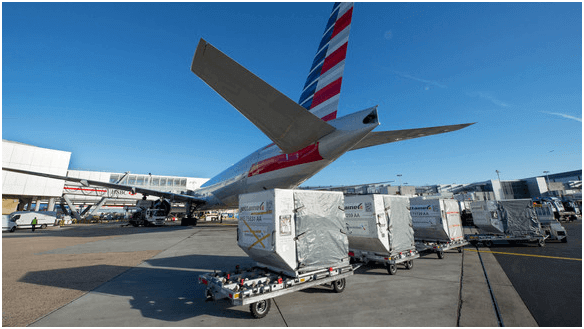Heathrow: We Can Reduce Freight Emissions and Still Increase Our Cargo Capacity
Pledge to be a sustainability leader and a better neighbor to local communities
Heathrow, October 12, 2017: Speaking at the BCC International Trade Summit, Heathrow’s Non-Executive Chairman Lord Deighton announced a new ‘Blueprint for Sustainable Freight’ plan to reduce the impact of freight vehicles around Heathrow. Lord Deighton’s speech is the first time the airport has publicly addressed the challenge of the environmental impacts of cargo and set out its plans to ensure that even as Heathrow and freight volumes grow with expansion, overall airport-related traffic on the road does not increase in number compared to today.
Heathrow is the UK’s biggest port by value – responsible for handling over 30% of the country’s non-EU exports by value – more than the ports of Southampton and Felixstowe combined. Heathrow’s role as a trading hub will grow as expansion takes place, with cargo capacity set to double with the addition of a third runway. Currently, the majority of freight movements – 2.75 million freight vehicle movements each year- are made to support the airport’s cargo operations.
The ten practical steps set out by Lord Deighton in his speech today detail how freight operations can be more efficient, responsible and sustainable in the future. These proposed steps include:
- Using innovation through tools like a load consolidation “ Heathrow Cargo Cloud” app for local forwarders and the trial of low emission freight vehicles and geo-fencing technology to reduce emissions on local roads;
- Investments in airfield charging points to install an ultra-low emission zone for vehicles on-airport;
- Modernizing cargo infrastructure at the airport to allow for more airside transshipments, consolidation points away from airport local roads and a new cargo village that reduces unnecessary vehicle movements;
- Working with local authorities to address congestion points with a Code of Conduct for operators, and a joint strategic freight plan for local roads.
The steps outlined today show how the airport is delivering against the commitments set out in Heathrow 2.0, the airport’s sustainability strategy. Along with Heathrow’s ambitious plans to increase public transport use, and push forward on incentives like car sharing and taxi back-filling these steps will ensure that there is no more airport-related traffic on the roads compared to today with expansion.

New Heathrow cargo concept: delivering benefits for both, the environment and the economy
Photo: Heathrow Airport
Source: Heathrow Airport
